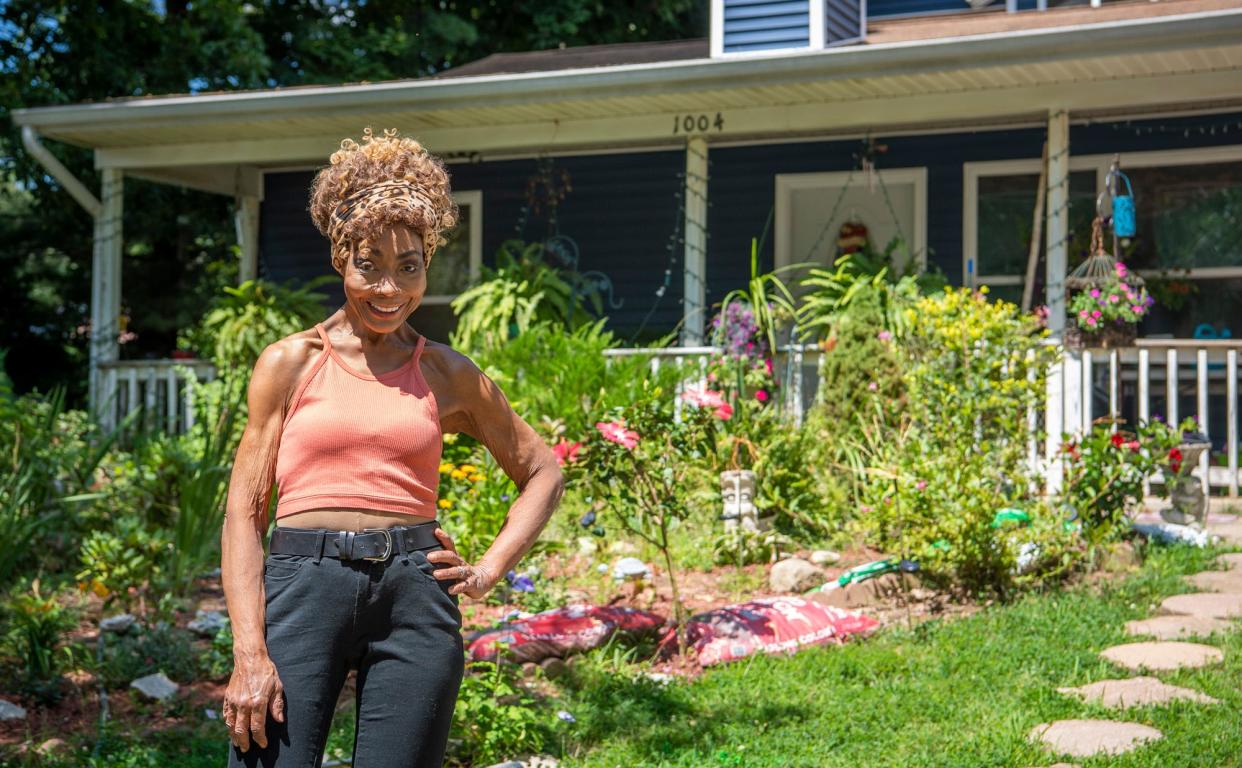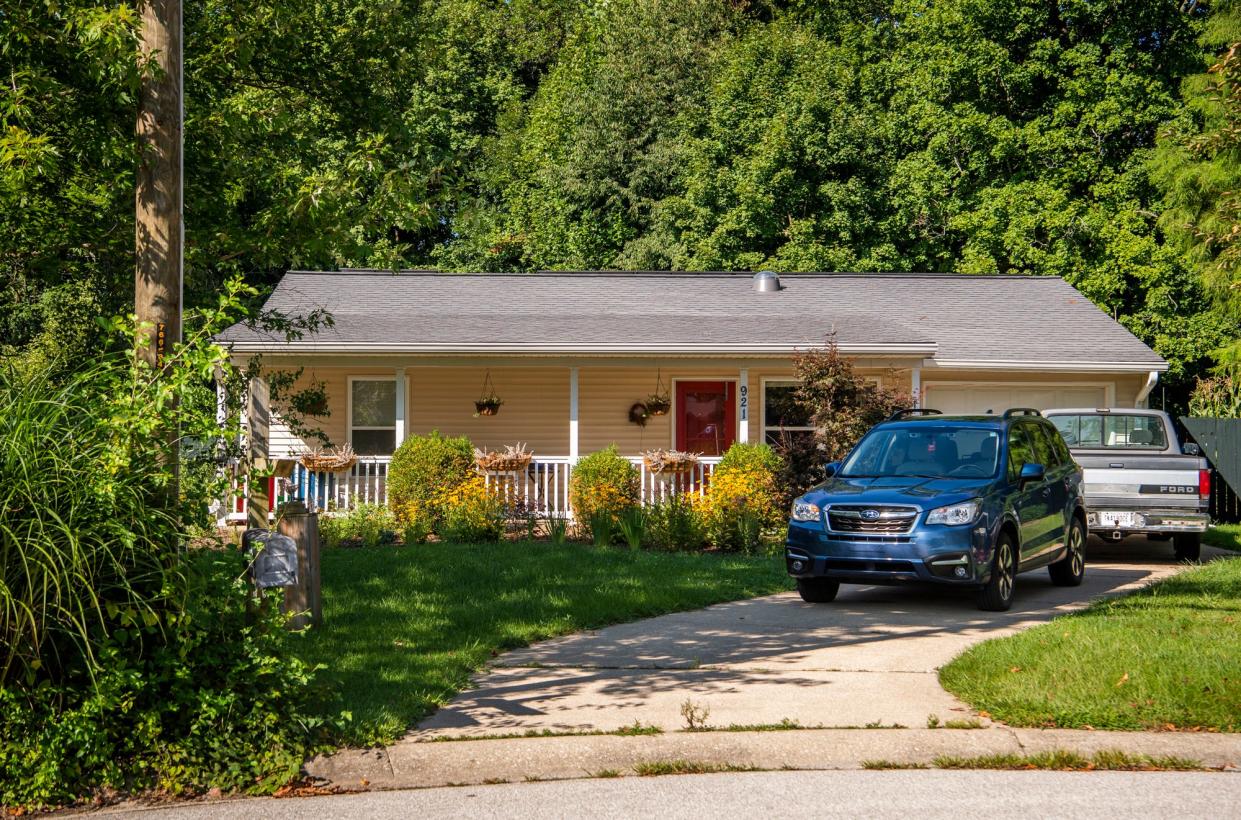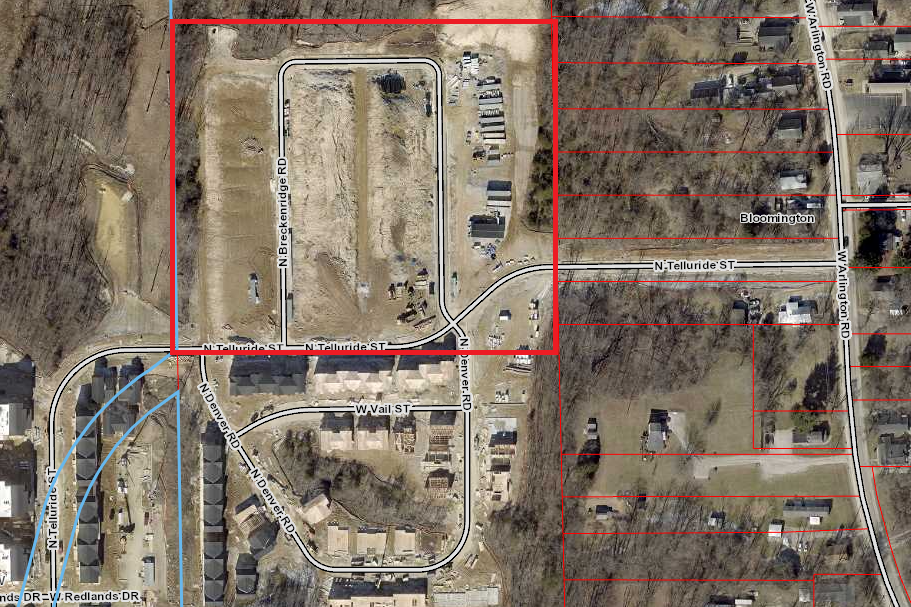How Bloomington's new land trust neighborhood will be different than its first

In 1994, Birdena Oakley-Carlisle watched builders construct her home from the ground up in Bloomington's land trust neighborhood, Autumnview. She didn't know then that the trust would disappear less than 20 years later.
As Bloomington's new land trust approaches the building phase, community members have raised concerns about the land trust model, citing the failure of the previous program by Housing Solutions, Inc., said Nathan Ferreira.
Beginning in 1993, Monroe County Housing Solutions, Inc. — a freestanding nonprofit — built houses in a neighborhood on West RCA Park Drive and surrounding streets, Cardinal Court and Harmony Place, as part of a community land trust. But by 2010, the trust had dissolved, Ferreira, the city's director of real estate development, said.
Bloomington and Monroe County residents who remember this effort find themselves asking a question: Will the Summit Hill Community Land Trust be different?
"I'm one of the few who have managed to hold on."
Twenty-nine years ago, Oakley-Carlisle watched contractors pour the concrete footings for her new home. They had encouraged her to choose a lot next to a community park, and, considering her only roommate — a 165-pound Rottweiler — she agreed.
In the next few decades, Oakley-Carlisle would survive cancer, endure racism and get married. Even when she received offers on her home for its proximity to the park, Oakley-Carlisle held on. She lived in that house through it all, even after the organization that helped her afford it was no more.
The trust dissolving meant land would no longer be separate from the price of the home — a core principle of land trusts. Buyers enter land trust agreements because of the affordability offered by paying for a house, not the land. Many Autumnview residents took out second mortgages to purchase their lots.
Oakley-Carlisle took a different approach that helped her afford her payments. She sold the house back to the contractors, renting from them until she could repurchase it with the help of a Section 8 Housing Choice Voucher. She still lives there today.
Monroe County Housing Solutions Land Trust: What was it?
A Herald-Times article published July 31, 1994, said Autumnview would be Indiana's first land trust subdivision where affordable housing for local families would be built.
According to Patrick Murray, who was a board member at Housing Solutions, there were a few phases of the plan. It began when RCA gifted land in southwest Bloomington to the city. Part of it would be used for what is now RCA Community Park, and the rest later became land trust housing.
The city used Community Development Block Grant funds to assemble the infrastructure for Autumnview, then worked with the newly formed nonprofit called Monroe County Housing Solutions, Inc. (later renamed Housing Solutions, Inc.).
Potential land trust homeowners who met income eligibility guidelines were required to take Housing and Neighborhood Development's homeownership program, Murray said. They would then choose a lot, which the city deeded to the nonprofit. The first home was completed in 1993. Autumnview would eventually contain 29 houses.
"Under the trust, a person who meets income guidelines can purchase a $40,000 to $55,000 house," The Herald-Times wrote in a 1994 story. "The land will be retained by the trust and the homeowner will lease it for 99 years for less than $100 a month, including money set aside for property taxes."

After Autumnview's completion, grant funds paid for more land. The land trust built 19 houses on Countryside Lane and Peoples Court and called the neighborhood Winterwood. Two more stand-alone houses were later built.
Jeff Stone, assistant director for Housing Solutions, Inc., praised the benefits of the land trust model in a 2003 publication for the Federal Reserve Bank of St. Louis. The Bloomington land trust would complete its 50th home that year, he wrote.
"A home buyer who takes this opportunity is also providing opportunity for future home buyers. Buying a land trust home is building and buying with a sense of social conscience," Stone wrote. "For everyone who has a hand in this — providing a glass of water to those who thirst — our cup runneth over."
What went wrong?
In 1993, when it was created, land trusts were more common in large cities, Murray said. As Indiana’s first, and because it was based in a town of less than 65,000 at the time, the land trust struggled to secure reliable funding.
“Making it work was a challenge,” Murray wrote in an email. “It was not easy.”
To pay for staff, construction and administration, Housing Solutions charged a developer fee, or a surcharge on the sales price of each house. In the beginning, that provided some income. Housing Solutions fundraised annually, but its donor base did not provide a steady stream of funds, and donations waned.
Another unstable source of income was lot rent, a monthly charge homeowners paid. However, because Housing Solutions used grants from the city to establish the housing, only low- to moderate-income families could live there. This meant that some residents were unable to make those required payments, especially when property taxes increased, Murray said.
Construction of the homes was financed by local banks, so when banking consolidations forced Housing Solutions to use out-of-town lenders, another problem was introduced. Per land trust principles, mortgages did not include the land upon which the homes were built. Usually, local lenders sell loans to a secondary market, Murray said. But third-party lenders were reluctant to buy loans that didn't include land.
When land trust homes were resold, Housing Solutions had the right to refuse, usually when the seller could not find a buyer who met low-income requirements. In these cases, the organization would buy the houses back.

"Individually, perhaps the problems were manageable," Murray wrote. "Collectively, it was too overwhelming to manage."
Housing Solutions sold lots to homeowners when possible, paid back its loans and dissolved the land trust, Murray said. The nonprofit followed suit shortly thereafter.
How the Summit Hill Community Land Trust is different
The Summit Hill CLT agrees with the philosophy Stone shared in his 2003 piece: that participating in the land trust model is an investment in maintaining affordability for current and future homebuyers. But this new program's structure is a bit different, and that's what will make the difference, Ferreira, Bloomington's director of real estate development, said.
Because Summit Hill Community Development Corporation is part of Bloomington Housing Authority, it is able to "hit the ground running" with this land trust, Ferreira said. It has reliable staffing, funding and lending plans in place.
To address housing demands securely and long-term, the city wanted to anchor the land trust within an agency where it can succeed without having to cover overhead, Ferreira said. So it chose BHA's Summit Hill Community Development Corporation, a subsidiary that will collect revenue by building market-rate homes in the 40-lot Arlington Park neighborhood.
Federal funds from the 2021 American Rescue Plan Act and other grant funding will help, he said. Land trust homeowners will pay an application fee, due at closing, and monthly stewardship fees (which is like an HOA fee, but less expensive), keeping payments below 30% of their take-home pay.

Since Summit Hill Community Development Corporation, a nonprofit, will retain ownership of the land, Ferreira reported the county assessor said it won't be charged property taxes.
In 2012, after the Housing Solutions land trust had dissolved, Freddie Mac changed the way ground leases would be written for land trusts, Ferreira said. The mortgage rider lays out conditions for land trust mortgages so they're treated like any other and can be sold the same. This solves an issue Housing Solutions faced, wherein land trust mortgages were considered "unconventional."
Today, Oakley-Carlisle's house is completely paid for. It sits beside a community park, where the 70-year-old can walk her dogs along the trails. The front yard is green and flowering, and she's proud of the work she has put into it. It's her forever home, she said.
Though she considers hers a success story, Oakley-Carlisle said Bloomington's housing market — like an old home with a leaky roof — still needs some work.
This article originally appeared on The Herald-Times: Arlington Park land trust neighborhood's plan for affordable homes
